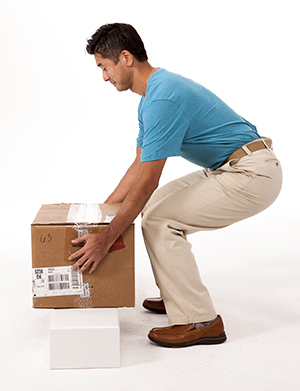Back Safety for Healthcare Workers
Whether you’re moving a patient, lifting a box of supplies, or pushing a cart or wheelchair, your back is always working. Low back pain is a common problem among healthcare workers. Studies suggest that the prevalence of back pain in healthcare staff, particularly in nurses, is even higher than that in heavy industry workers. This may affect their working capacity as well as their quality of life. With correct precautions, however, one can reduce the risk of back pains and other problems associated with it. Use the tips below to help you reduce your risk of back injury.
Reaching
Reaching for records, files, or supplies, especially in high places, can strain your back:
-
Reach only as high as your shoulders.
-
Move as close to the object as possible.
-
Use a stool or stepladder if you need to get closer to the load.
-
Test the weight of the load by pushing up on a corner before lifting. If it’s too heavy, get help.
Bending and lifting
 |
| Bend at your knees and hips when bending down. |
When you’re bending down to reach or lift, move your whole body to protect your back:
-
Bend your knees and hips, not your back. Don't bend or lift if you are off balance or if your back is twisted.
-
Kneel down on 1 knee, if necessary.
-
Get as close to the object as you can so you won’t have to reach with your arms.
-
Keep the load close to your body. “Hug” it unless there is a chance it may contain sharps.
-
Tighten your stomach muscles to support your back when you lift.
-
Lift with your legs, not your back.
-
Maintain a wide base of support. Keep feet shoulder-width apart, or one foot slightly in front of the other.
Pushing and pulling
Pulling larger objects can be as hard on your back as lifting. Whenever possible, push instead:
-
Push with both arms, keeping your elbows bent.
-
Stay close to the load, without leaning forward.
-
Tighten your stomach muscles as you push.
Online Medical Reviewer:
Heather M Trevino BSN RNC
Online Medical Reviewer:
Marianne Fraser MSN RN
Online Medical Reviewer:
Shaziya Allarakha MD
Date Last Reviewed:
8/1/2024
© 2000-2025 The StayWell Company, LLC. All rights reserved. This information is not intended as a substitute for professional medical care. Always follow your healthcare professional's instructions.